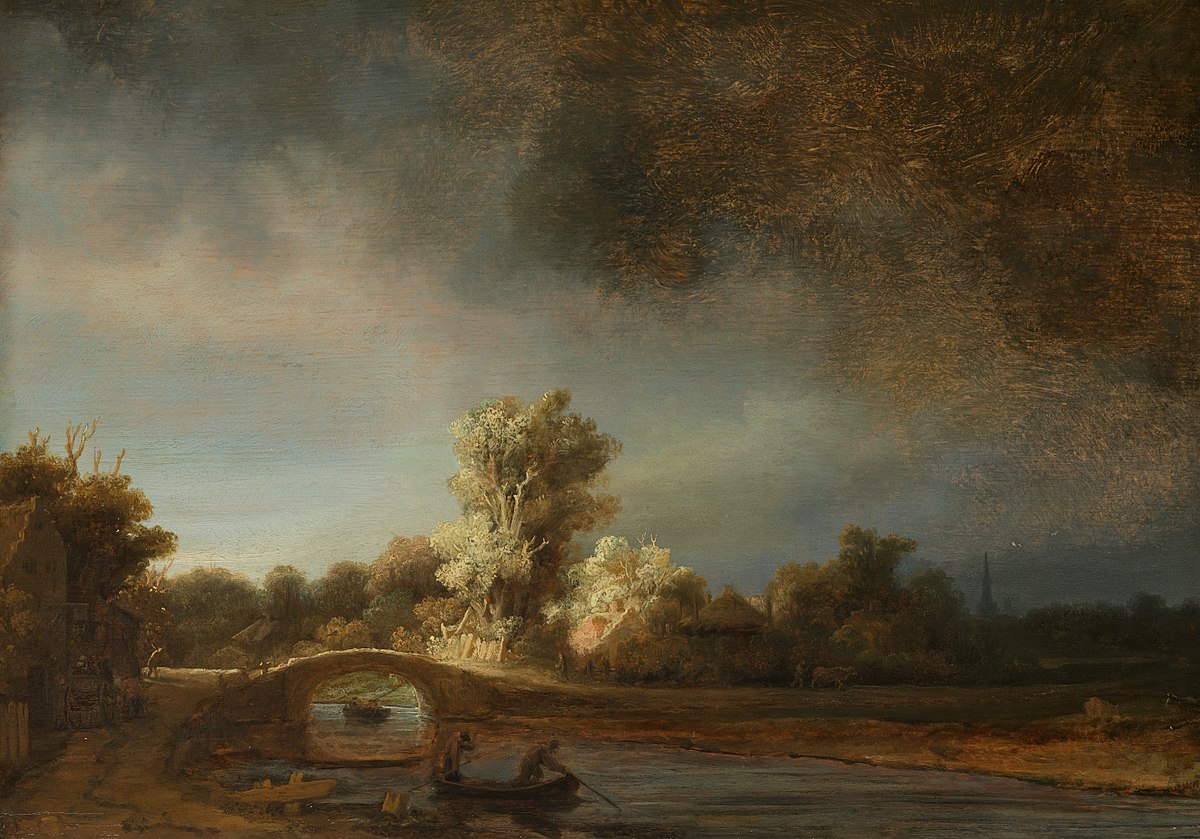Landscape with a Stone Bridge, 1637 by Rembrandt

Rembrandt was, on the evidence of his drawings and etchings, an enthusiastic walker in the countryside. But in the few landscape paintings by him that are known, he does not generally represent the countryside around the places where he lived, or any existing landscape. Even when it is a question of a true Dutch landscape - it is thought that the surroundings of Oudekerk on the Amstel can be recognized in the Landscape with a stone bridge - still Rembrandt depicts it in a way in which anyone walking along the Amstel would rarely have seen it, with wild clouds, thick groups of trees, a dark stream, a sharp alternation of light and shade. As in his history pictures and also in his portraits, Rembrandt goes for drama, even in a landscape.
In the seventeenth century open country was very near at hand for the citizens of Amsterdam. The construction of the great girdle of canals of the Herengracht, Prinsengracht and Keizersgracht was only completed at the end of the seventeenth century; until then the Singel was the outward limit of the city. Nobody therefore had to walk more than fifteen minutes to reach one of the city gates.
A landscape with so much drama in it might in fact be more than just a landscape. Some see a message, a lesson for the Christian way of life, in this painting, and in many other seventeenth-century landscapes. They recognize all kinds of symbols in the picture, which are also used in religious texts and sermons of the period.
In this way the bridge over the river would be a symbol for Christ, the only road which leads man safely through life, represented by the river. On the left of the picture can be seen a tavern, recognizable by its hanging sign. In front of the tavern is a coach; the passengers have alighted and gone into the tavern. They have not followed a Christian way of life, they have made the wrong decision. The traveler who is just approaching the bridge in the streak of light is wiser. He bears his sins in the bundle on his back, and with this burden approaches the bridge, the bridge which will take him over to the other side past the ancient trees and the old gate, symbols of the transitoriness of life His final goal is to be seen on the far right of the painting, the church, in other words Heaven.




















